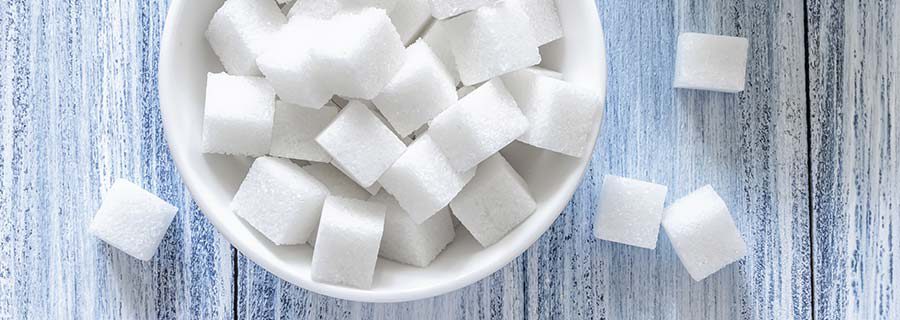How to Reduce Sugar Intake
Hidden under various names, sugar can be difficult to spot. Of all the sugars, it is added sugar that one must be the most wary! It is a sweetener that is added to foods and beverages to give them a sweet taste, texture and volume. This simple carbohydrate provides energy to the body. We sprinkle it on fresh fruit, we put in its coffee, but especially, we find more generous amounts in processed food.
Difference between natural sugar and added sugar
Natural sugars, such as fructose in fruits and lactose in dairy products, must be distinguished from added sugars such as high fructose corn syrup. The added sugars do not bring nutritional value to the food. They can be used to preserve certain products such as jam, contribute to the fermentation process in bread making, but above all it makes the taste of food more attractive
Recommended amount of sugar
Sugar consumption is estimated to be between 5% and 10% of total daily energy intake. It should not exceed 25 grams, or about 6 teaspoons. Yet a study conducted in 2004 showed that, on average, Canadians consume about 110 grams, or 26 teaspoons, of sugar per day. This represents 21.4% of the total daily energy intake.
To get a better idea of the amount of sugar that one ingests, it is important to keep in mind that:
- – 1 teaspoon of sugar is equivalent to 4 grams of sugar
- – 1 gram of sugar is equivalent to 4 calories.
Why should we limit our intake of added sugar?
As we know, consuming too much sugar has a direct impact on health. Obesity, overweight, type 2 diabetes, heart disease and tooth decay are just a few examples.
Processed foods are not only rich in added sugar, but they usually also contain a lot of salt and fat. The more space is given to this type of food in its diet, the less space is left for healthier foods.
How to recognize sugar added in commercial products?
Given that the industry presents sugar in more than 60 different names, detecting it can be a daunting task. Here is a list of the most common names :
- – Cane sugar
- – Brown sugar
- – Sweetener
- – Corn syrup
- – Dextrose
- – Fructose
- – Juice Concentrates
- – Molasses
- – Glucose
- – Malt Sugar
- – Malt syrup
- – Honey
- – Lactose
- – Maltose
- – Maltodextrin
You can also read the list of ingredients while keeping in mind that the one that appears first is also the one present in greater quantity.
How to reduce the intake of added sugars?
- Obviously, it is best to eat sweets and other sweets as little as possible. Book these treats for the weekend and special occasions. To avoid cravings, avoid skipping meals and never spend more than three hours without eating. Not keeping in the pantry is a good way to avoid them!
- Soft drinks and other sweet beverages should be consumed in moderation, or even be banned. A 335 ml soda can contains about 40 grams of sugar, which is well above the recommended amount. When you are thirsty, the best way to quench your thirst is to drink water!
- Whole grain cereals are chosen because the refined cereals in the processing process lose their nutritive value together with the fibers and the germ. The refined cereals therefore contain a high amount of sugar and very few nutrients. So we have to eat more to have the belly full … sugar! This is the case with most popular cereals with children that contain about 3 to 4 teaspoons of sugar per serving of 30 grams (about 3/4 cup to 1 cup).
- You buy plain yogurt, and you can add a topping such as fresh or frozen fruit, nuts, dried fruit, fruit compote, maple syrup or honey. It should be noted that flavored or fruity products can contain up to four teaspoons of sugar per serving of 175 grams. Mixing plain yogurt and flavored yogurt is also a good way to cut the amount of sugar by half.
- We keep away from desserts, cakes, muffins, biscuits and tender bars from the trade, as they are filled with added sugar. By cooking them self, one can control the quantity and quality of the sugar that is added. In some recipes, the sugar is replaced by purees or fruit compotes that provide nutritional value in addition to the desired sweet taste.Finally, consuming unprocessed foods is the best way to avoid added sugars, but also other substances that are just as harmful to your health. Find out more about the effects of salt on health in “Excess salt and hypertension”.


Login to post a comment!